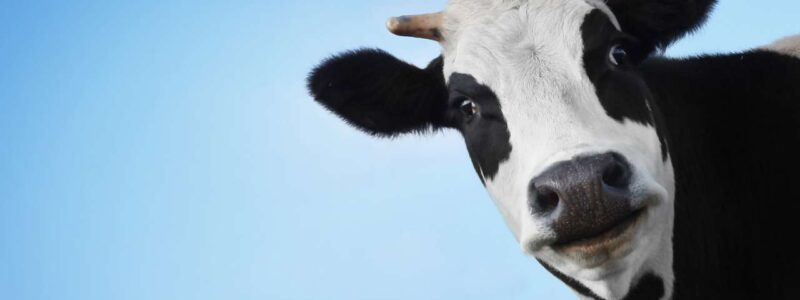
As of May 1, 2025, in Ukraine, the number of cattle in the household and industrial sectors increased by 2% to 2.179 million head, including cows — by 0.3% to 1.153 million, However, this figure is 8% lower than in the same period last year for both cattle and cows, according to the press service of the Association of Milk Producers (AVM).
The industry association noted that about 42% of animals are kept on industrial farms and 58% on private farms. The industrial sector has 921,500 head of cattle, which is 5,000 head (+0.5%) more than on April 1, 2025. The number of cows is 382,400, an increase of 5,200 (+1.4%) over the last month. Over the last year, the number of cattle on farms has grown by 3,800 (+0.4%), and the number of cows by 3,200 (+0.8%).
There are 1 million 258.3 thousand head of cattle in the private sector, which is 37 thousand head (+3%) more than on April 1, 2025. As of May 1, 2025, the number of cows in private households was 770,900, which is 2,000 (-0.2%) less than a month ago. Over the past year, the number of cattle in private households has decreased by 186 thousand heads (-13%), and the number of cows by 107 thousand heads (-12%).
AVM analyst Georgy Kukhaleishvili pointed out that the reduction in cattle numbers has been occurring in Ukraine for many years due to the lack of an effective state program to support dairy farming. The decline accelerated after the start of the full-scale Russian invasion. A typical situation in the frontline regions is the death of cattle as a result of shelling. Many farmers left their cows in the occupied territories. These animals are not registered or have been confiscated by Russian occupiers and sold for meat. Farmers send injured cows to slaughter, which also contributes to the decline in livestock numbers.
“As of now, there are prerequisites for the relocation of farms from the Dnipropetrovsk and Sumy regions to other regions of Ukraine amid intensified Russian missile and bomb strikes on border and frontline settlements. Farmers will only be able to transport part of their livestock, as most farms in Ukraine were built in the 1970s and 1980s and no longer meet the requirements for keeping animals. The lack of premises suitable for keeping cows creates conditions for a further reduction in livestock numbers,” the AVM emphasized.
In addition to the frontline regions, cattle numbers have declined on farms in Zakarpattia and Chernivtsi regions, which is likely due to the fact that they are working to improve their efficiency and are selling unproductive cows. An outbreak of foot-and-mouth disease in Hungary and Slovakia poses a potential risk of increased culling if the disease spreads to western Ukraine.
Many farmers are not investing in increasing their cow herds during the war and are experiencing a shortage of working capital. According to the study “Ukraine: The Impact of War on Agricultural Profitability” conducted by the UACB, the Ministry of Agrarian Policy and Food with the support of GFDRR, farmers’ production costs are rising faster than prices for finished products due to higher feed and electricity prices, the devaluation of the hryvnia, and a decline in the purchasing power of the population.
“There is cautious optimism about an increase in the number of dairy farms in relatively safe regions of Ukraine, which, despite the war, are modernizing existing facilities, building new ones, and increasing their high-yielding cow herds,” the industry association concluded, adding that as of May, at least 40 farms are investing in these measures.